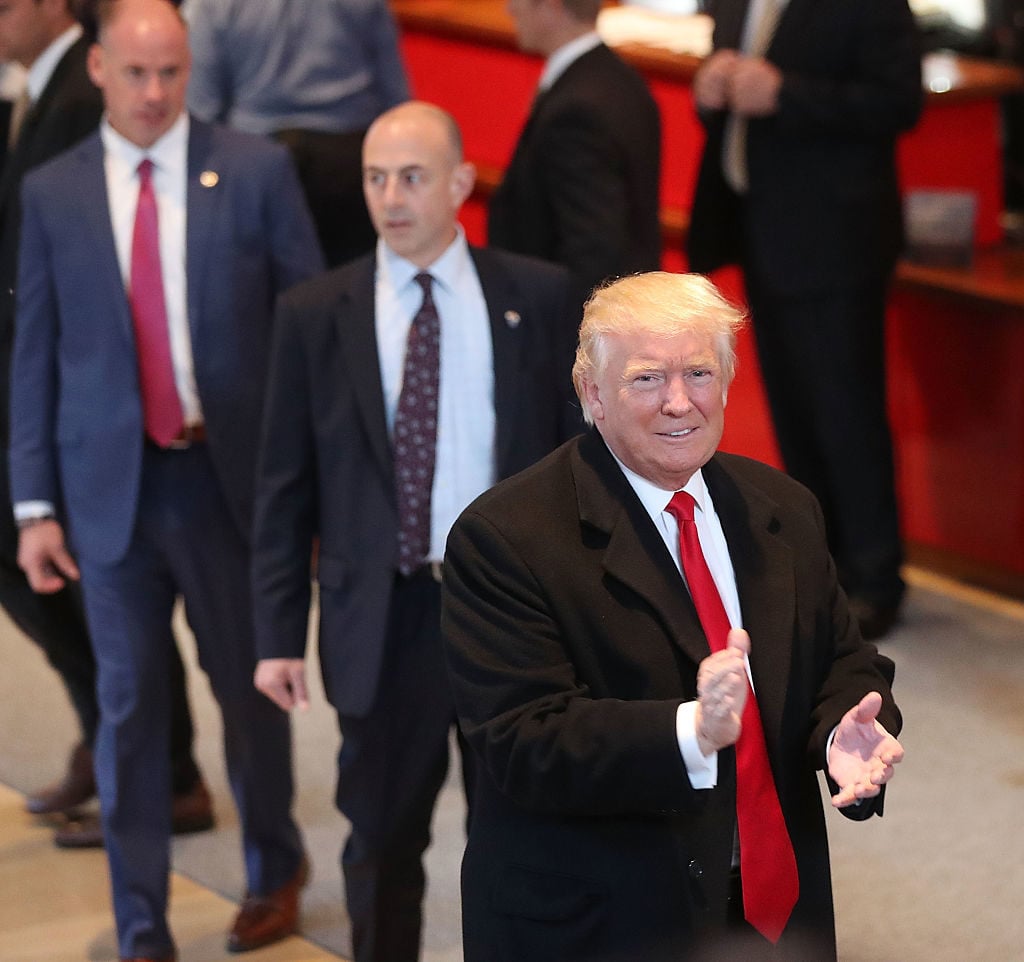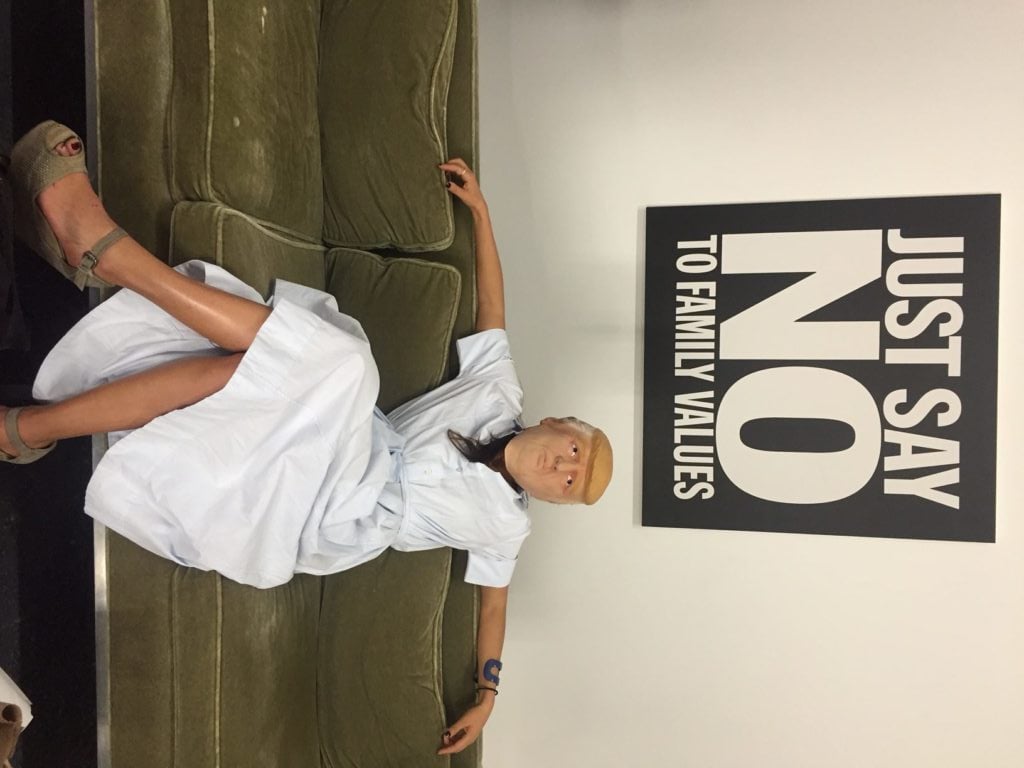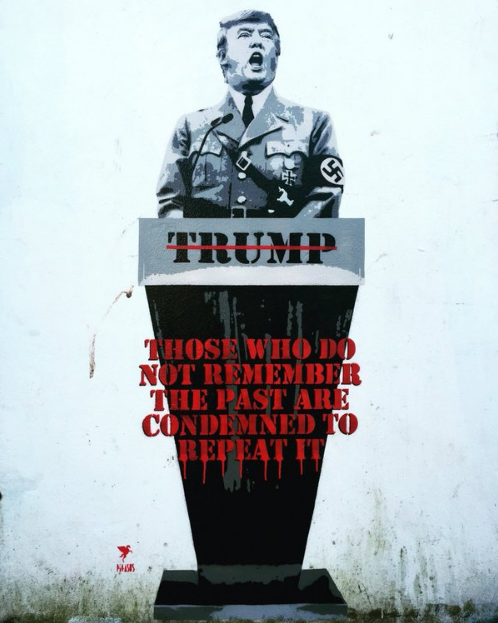Politics
Art Must Admit the Lesson of Donald Trump’s Election or Face Irrelevance
We need to reckon with the shock if we are to combat the horror effectively.

We need to reckon with the shock if we are to combat the horror effectively.

By now, the shock of Donald Trump’s election is fading, leaving only the horror.
But we need to reckon with the shock if we are to combat the horror effectively. Since election night, the cultural sphere has valiantly rallied its opinion-leaders, declaring that art must join the fight against whatever terrors a Trump presidency has in store for us.
Katherine Brooks, arts editor of the Huffington Post Arts & Culture page, rallied the troops with a heartfelt post titled “Dear Artists: We Need You Now More Than Ever.” She declared:
To artists: Write plays. Paint, sculpt, perform. Write some more. Because we need you more than ever. To everyone else: See plays. Go to museums, concerts, exhibitions. Read. It’s not all you can do (in fact, here is a list of timely volunteer and donation opportunities). But I agree—art is, in part, how civilizations heal, provoke and change minds.
And yet everything about the dynamic of this election should raise some critical questions on the limits of cultural activism. The entire cultural establishment—and that means cultural figures far more potent and popular than Brooks’s playwrights, sculptors, and novelists—threw its weight behind Hillary Clinton (or at least against Donald Trump) in the final stretch of this campaign.
I mean, the nation’s superheroes were even on board, with Robert Downey Jr., Scarlett Johansson, and friends filming cutesy anti-Trump videos! The final sprint brought out giant pop stars across the map: Springsteen and Bon Jovi in Pennsylvania; Jennifer Lopez in Florida; Beyoncé and Jay Z in Ohio. Clinton lost all these states.
Trump, for his part, looked very alone out there in those final days, and was much ridiculed for it. “I didn’t have to bring J Lo or Jay Z,” Trump declared at a teeming rally in Pennsylvania on November 5th. “I am here all by myself. Just me. No guitar, no piano, no nothing.”
As for visual art, I made a good faith effort to round up all the art that made the news during this campaign, and it was clear that Trump lost the art vote by a wide margin.
Mainstream culture failed to be the decisive factor where it was needed. It is even likely that this anti-Trump unanimity may have helped give a false sense of his weakness. (Incidentally, the artists I know who actually left the cosmopolitan bubble seem to have gained a more realistic sense of both the breadth and diversity of Trump’s support.)
In the wake of election day, Deborah Cullinan, head of the invaluable Yerba Buena Center for the Arts in San Francisco, penned a stirring statement saying that, in the fight against the forces that the Trump election has unleashed, art spaces could help “name and bring to light a new world that is infused by the brilliance of a collective imagination that is so bright, so empathetic, so powerful that every single person votes with conviction and with compassion.”
Cullinan concluded, “it is our cultural institutions that must lead the way.” I truly hope that this can be so.
But here’s something to consider: Lack of education was one of the biggest predictors of Trump support. Educational attainment, conversely, happens to be “the strongest predictor of museum attendance.”
Can we expect museums to “lead” opinion in the sense that Cullinan wants, in the face of this fact? Can we place our faith in the art they show to “heal, provoke and change minds,” as Brooks would like, if they don’t reach the minds that need to be changed?
We are missing a moment of self-reflection here.

A guest dons a Donald Trump mask at Jonathan Horowitz’s 2016 Presidential Debate Party at Gavin Brown Harlem. Courtesy of Gavin Brown’s Enterprise.
Following the Brexit vote in Britain, I wrote an article titled “After Brexit, Art Must Break Out of Its Bubble.” I could write the same now, swapping “Trump” for “Brexit.” Speaking on Doug Henwood’s show, Behind the News, British political scientist Alan Finlayson made a comparison between the rhetoric of the anti-Brexit “Remain” campaign earlier this year—with its outcome that similarly blindsided the world of established opinion—and the rhetoric surrounding the Clinton campaign:
The “Remain” campaign and the Clinton campaign were in some respects running an identity politics campaign and not realizing that they were doing so. They didn’t realize that [the way] they were attempting to persuade people to vote against Brexit really reflected on and relied on some sense of yourself a progressive, forward-looking, liberal, internationalist-oriented cosmopolitan. Their reference points and their style and their jokes and advertising all really reflected a really particular cultural milieu, but they didn’t realize that it reflected such a cultural milieu. And I think that exacerbated the identity-based appeals on the other side. They were able to say, “Look at them: They don’t care about you. They despise you. They belong to a different world to you. You should be voting on this side.”
If we don’t reckon with the failures of culture heretofore, we will be doomed to misdirect our energies in the future. The Onion, as usual, sums up the danger economically with its post-election headline: “DNC Aiming To Reconnect With Working-Class Americans With New ‘Hamilton’-Inspired Lena Dunham Web Series.”
I thought about this this past week when the entire media—social and otherwise—went gaga about the “Hamilton” / Donald Trump feud. On the whole, the theater community congratulated itself, though I’m not sure a musical that costs $1,000 a ticket is quite the voice of the people. The president elect, for his part, did what he does best, leveraging a largely trivial cultural controversy to distract from the shenanigans going on with his cabinet appointments.

Pegasus’s graphic comparing Trump to Adolf Hitler.
Given the terrifying rhetoric coming from Trump Tower—they’re talking internment camps with unsettling fervor—comparisons to Germany in the 1930s are in vogue. So, I went back to my copy of John Willet’s Art and Politics in the Weimar Period this week to see what relevant lessons might be.
There, you find an account of the brilliances of late Weimar culture, rooted in the urgency of a sharpening social crisis. But there is also a cautionary assessment of its failures to have a realistic perspective, born not just of “the old left-wing tendency to underrate the non-urban population, which was where the Nazis had much of their strength,” but also of a militant left’s very success in creating its own bubble-like universe of radical organizations, including cultural organizations.

John Heartfield, Der Sinn des Hitlergrusses: Kleiner Mann bittet um grosse Gaben. Motto: Millonen Stehen Hinter Mir!” (The Meaning of the Hitler Salute: Little man asks for big gifts. Motto: Millions Stand Behind Me!), 1932. Image via Wikimedia Commons.
This is the period when Bertolt Brecht and John Heartfield made some of their most urgent works. And yet, Willets notes, “all records and recollections of the German Left in this period move the reader at once into a quasi-autonomous sphere, where the notion of a successful battle to take over the vacant political, economic and cultural establishment seems entirely natural.”
We know how that ended.
Historical comparisons are both useful and dangerous. Both the activist left and right are dramatically less well-organized today than they were in storm-tossed Germany, where events really had the character of open war. Things are volatile, but not that volatile.
Let me offer another (equally inexact) historical example, then, to stress that the problem still stands.
In preparation to write about the fine Hélio Oiticica show at Pittsburgh’s Carnegie Museum, I have been reading Roberto Schwarz’s magisterial essay about radical culture in Brazil in the 1960s. Schwarz stresses just how mainstream left and anti-imperialist rhetoric had become in the Brazilian culture of the era.
Then, in 1964, a US-sanctioned coup seized power. The resulting junta would emphasize a populist return to “traditional” values: “simple homespun thinking suddenly rose to historical pre-eminence—a crushing experience for the intellectuals, who had become unaccustomed to such things.”
Yet the regime initially focused on putting down workers and peasants, leaving the students and artists to stew in their extravagantly radical rhetoric. Some of the glories of modern Brazilian culture flowered in this period, fertilized in this hothouse atmosphere (just as some are now predicting that post-election angst will actually inspire creativity): in art, Oiticica’s and Lygia Clark’s breakthroughs with participatory sculpture; in theater, Augusto Boal’s experimental Theatre of the Oppressed; in education, Paulo Freire’s landmark manual for popular education, Pedagogy of the Oppressed; in music, the mind-altering pageantry of the countercultural Tropicalia movement.

Hélio Oiticica, Seja Marginal, Seja Herói (Be an Outlaw, Be a Hero), 1968. Image courtesy Wikiart.
Schwarz recounts the wild acclaim that left-wing theatrical satires of conservatism received. Yet there was a sense, he writes, of “unreality” to it all, of being willfully out of touch with the forces gathering all around:
The real drama was not what was going on on stage. No elements of the critique of populism had been absorbed. Mutual confirmation and enthusiasm might have been important then, but it was also true that the left had just been defeated, which gave a rather inappropriate air of complacency to the wild applause. If the people are intelligent and courageous, why were they defeated? And if it had been defeated, why so much congratulation?
Brazil’s anti-dictatorship intelligentsia was isolated and growing more so. Four culturally fertile years after the original coup, in 1968, the dictatorship decided it had had enough of games. It dispensed with the pretenses of free speech and stable rights. Cultural expressions of protest were suppressed or neutralized. A fresh convulsion of brutality seized society.
The bubble proved fragile, as bubbles are.
This is what Sinéad Murphy has called the “art kettle” (referring to the practice of British police of “kettling” protesters, of boxing them in to halt their momentum), the process by which “what we call ‘art’ operates to physically and psychologically contain a growing population of allegedly ‘free’ thinkers, speakers, movers and livers.”
Note that Schwarz says “mutual confirmation and enthusiasm might have been important then”—as I believe they are now. If an artist at the Whitney Museum wants to turn her artwork upside-down to suggest a world gone wrong, I think that might just be a necessary gesture, just to feel personally that the significance of the moment has been registered.
Maintaining your sanity is necessary. But history and our own recent experience suggest that some soul-searching assessment of the limits of our own gestures, and some clear-eyed analysis of what rhetoric is effective and what is not, is going to be very, very important in the years to come. It will not be enough to languish in mythological beliefs about art’s value as a humanistic salve, or even to fly the flag for “political art” as a genre. We have to debate strategy.
Otherwise, we will delude ourselves with endless anti-Trump symbolic theater, applauding our own virtues and confirming our own righteousness within our prescribed sphere, but not advancing one step in the battle of ideas.